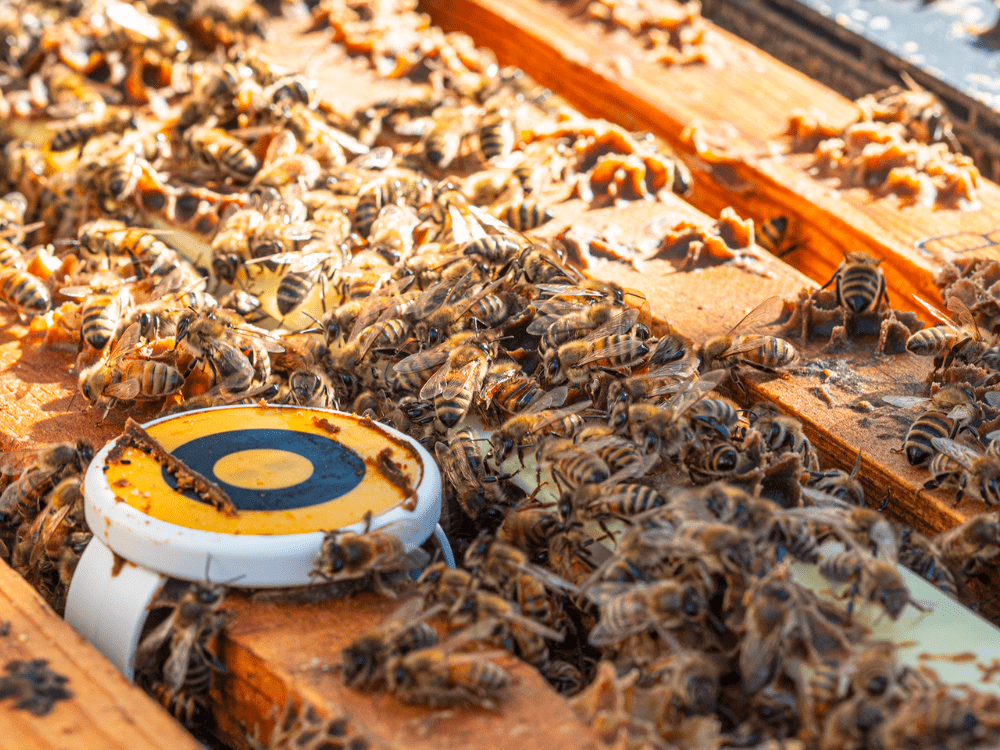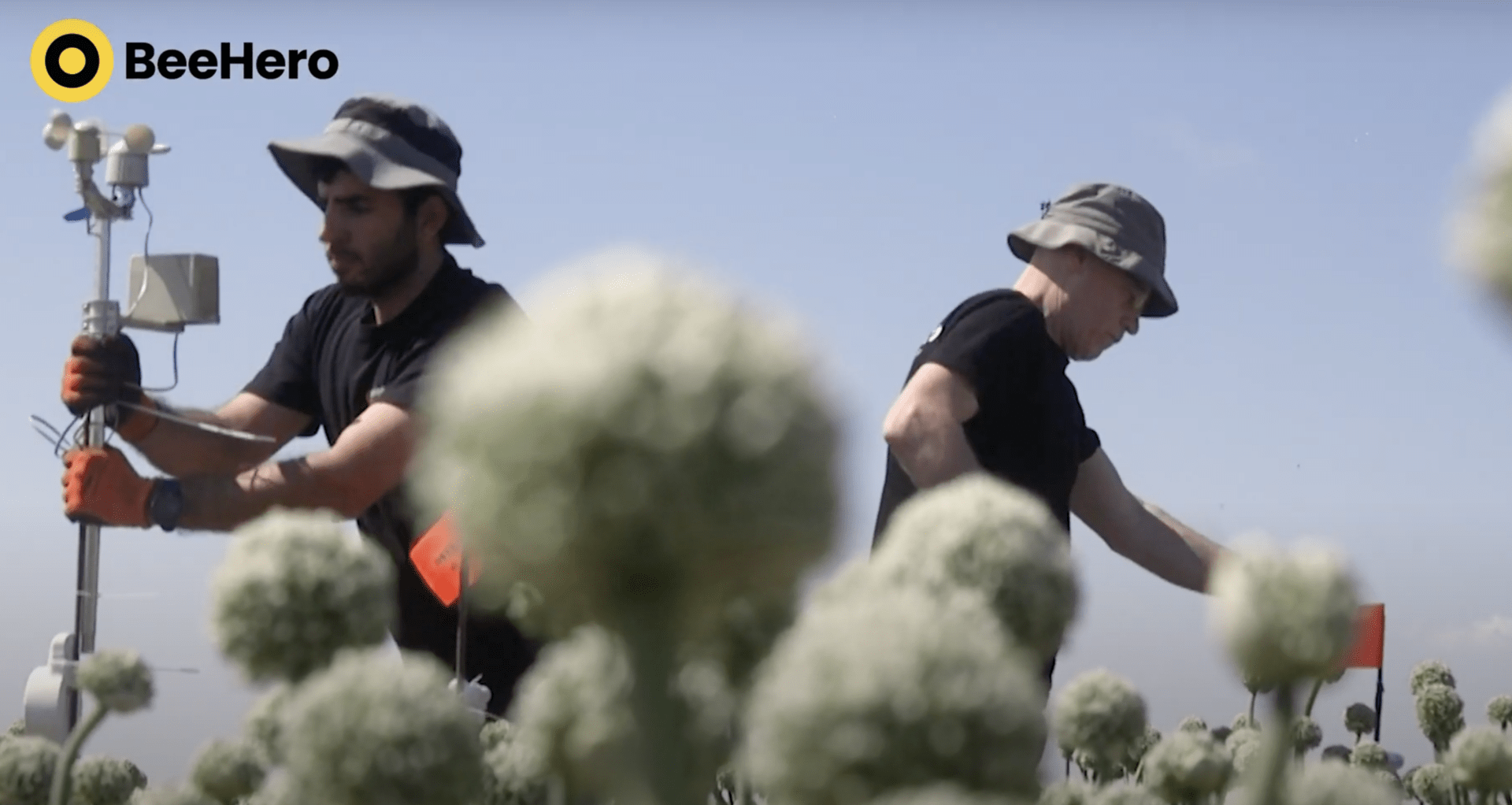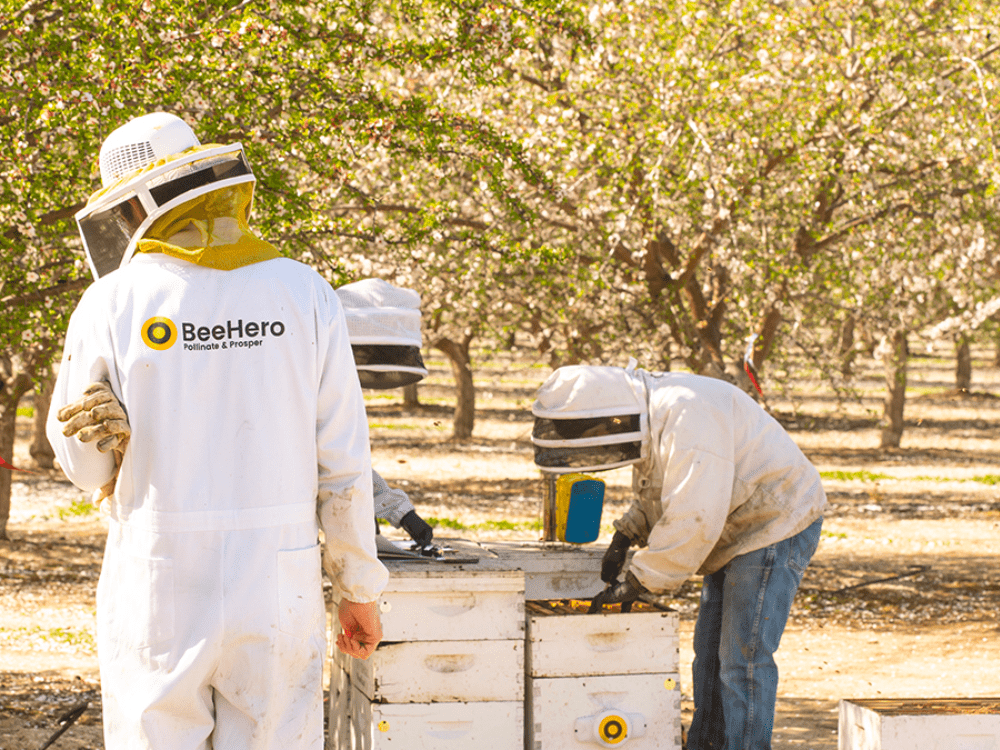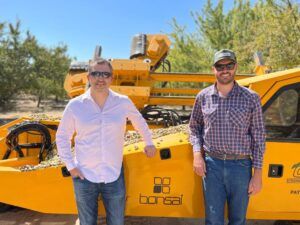- Precision pollination startup BeeHero has launched a new pollination insights platform — PIP for short — that enables growers to monitor bee activity outside the hive.
- California-based BeeHero says the new platform is meant to bring the same granularity of data found via its in-hive sensors to activity in the field, with the hopes of improving growers’ insights and therefore their yields.
- BeeHero will continue expanding the types of crops its technology works with in addition to expansion into new markets.

Growers have ‘Little control’ outside the hive
BeeHero’s SmartHive technology, which has been available for a few years, combines machine learning algorithms with low-cost sensors placed inside beehives. This offers growers granular data about crop type, topography, bee activity and health, issues with the queen, and a host of other factors. Growers can use this real-time information to make necessary changes to increase pollination, reduce bee mortality rates and address pests such as mites.
But outside the hive, growers have little control over where the bees go and where they pollinate, BeeHero cofounder and COO Itai Kanot tells AgFunderNews. Under- or over-pollinated crops can impact yields and consequently, growers’ returns.
On a more macro scale, this can impact food security. Pollinators like bees, many of which are under threat, are necessary for about 35% of global crop production including apples, cocoa, almonds and tomatoes. The United Nations Food and Agriculture Organization bluntly summed things up a few years ago when it said, “declining bee populations pose a threat to global food security and nutrition.”

Gleaning insights from outside the hive
BeeHero aims to bring the same precision it offers growers about in-hive data to bee activity outside the hive with the new platform.
For example, bees aren’t typically attracted to onions, and it’s hard to keep them on the flowers for adequate pollination, according to Kanot.
Netherlands- and Israel-based Hazera has worked with BeeHero for the last few years on this exact problem.
“They used to physically send someone every few days to stand with a clicker and count how many bees they saw on the onions,” says Kanot.
Needless to say, this was a huge expense and a fairly inaccurate practice, since bees are likely to take flight as soon as they sense someone walking through the field.
“The initial idea was to replace the person standing in the field and counting,” explains Kanot. “It worked really well and now we have other ways of using the PIP platform on other crops as well, and we can use it as a very complementary product to our [existing] process of what’s going on inside the hives.”
BeeHero does this with a simple in-field sensor placed in the ground. Once BeeHero remotely activates the sensors, the system monitors bee activity in the field right down to the number of bees landing on each flower. Growers can use that data to decide if a crop is receiving enough pollination or if they should move the hives to improve pollination performance.
The same goes for over-pollination.
“If you look at an apple orchard for example, let’s say a tree can hold 150 fruits to have really good quality fruit,” says Kanot. “What happens when you have 200 fruits on the tree? There’s a chemical thinning process, but then you also have to go through a physical thinning process and it’s not mechanical; you have to send people to the orchard to reduce 50 fruits of the tree. It takes a lot of time.”
Because fruits on the tree compete for resources, this is a time-sensitive process that can lead to food waste and higher labor costs, two things the apple industry already struggles with.
“By pollinating more precisely and having the understanding of how many actual visits you’ve got on a tree, you will be able to potentially provide growers with an understanding [that they have ] enough pollination and better get the bees out,” says Kanot. “Otherwise you’re going to have to spend a lot of money on the thinning process.”
The number of sensors per acre depends on each individual crop, he adds, so while the amount will vary from one grower to the next, he stresses the installation process is fairly seamless for the grower.
“Just shove [the stake] in the ground and that’s pretty much it; we activate it once bloom starts and the hives are there.”

From almonds and apples to row crops and beyond
“From the beginning, we’ve used low cost devices that are easy to install,” Kanot continues. “That allowed us to scale very quickly and not overcharge our growers or beekeepers. We’re still able to make money, they’re able to make sense of the business model and and I think it’s super important for the industry that we work in.”
BeeHero works with “mainly seed producers” at the moment. The company has also started working with apple growers in the state of Washington and is “looking into implementing this new product with other crops in the coming months in Australia and in the US.”
Strategically, the company has focused heavily on almond pollination in California.
Kanot says now BeeHero is looking at cranberries, blueberries and will “grow significantly” with apples. BeeHero is also going to be “doing some row crops” though Kanot won’t yet name which ones.
“We’re also putting a lot of focus on penetrating just general new markets,” he says, adding that there are “a lot of interesting things coming in 2024.”



